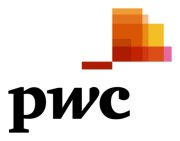Continuing declines in room rates outweighed improving occupancy levels in Manhattan hotels during the third quarter, extending a pattern established last year. Although supply growth appears to have finally peaked, Q3 marks the tenth quarter of declining RevPAR since the beginning of 2015.
Although supply growth may no longer be the top threat to the Manhattan lodging market, several other factors, including perceived political uncertainty and international travel restrictions, as well as a profound shift in demand segmentation, remain real concerns. Despite these, demand growth during the quarter of 3.4 percent outpaced an increase in supply of 2.2 percent, resulting in occupancy being up 1.2 percent. A continued lack of pricing power resulted in a 2.3 percent drop in average daily rate (“ADR”). As a result, revenue per available room (“RevPAR”) declined 1.1 percent. Through the first nine months of this year, RevPAR was down 1.3 percent.
In the third quarter, higher-priced hotels in the Luxury and Upper Upscale classes had greater occupancy growth and less severe offsetting declines in ADR, resulting in them outperforming hotels in the Upscale and Upper Midscale classes. Luxury hotels were the only segment that saw RevPAR growth, at 1.5 percent. RevPAR performance in Upper Upscale hotels was relatively unchanged, declining 0.1 percent. Hotels in the Upscale and Upper Midscale classes reported decreases in RevPAR of 3.5 and 2.8 percent, respectively.
Hotel performance throughout the five Manhattan submarkets was largely mixed. All neighborhoods reported decreases in ADR, but hotels in the Upper Manhattan and Midtown East submarkets had increases in occupancy that offset those declines. Hotels in Midtown East reported the strongest performance, a 2.3 percent increase in RevPAR; however, similarly to last quarter, this neighborhood experienced both the largest increase in occupancy, at 7.0 percent, coupled with the greatest decline in ADR, at 4.4 percent. The Upper Manhattan neighborhood saw RevPAR growth of 0.3 percent. Lower Manhattan, Midtown South and Midtown West experienced RevPAR declines of 1.0, 2.8 and 3.3 percent, respectively. Year-to-date, Upper Manhattan is the only neighborhood to report positive RevPAR performance, at just 0.4 percent. On a RevPAR basis, Midtown West and Midtown South have been the weakest, which may be indicative of the effects of a disproportionate amount of the new supply entering into these neighborhoods.
Similarly, for both the full-service and limited-service segments, occupancy levels increased while ADR decreased, resulting in declining RevPAR levels. Fullservice hotels were once again hit the hardest, with a 1.1 percent drop in RevPAR, while limited-service hotels saw a 0.8 percent decline. Through the first three quarters of the year, limited-service hotels increased RevPAR by 0.3 percent, while full-service hotels experienced a decline of 1.6 percent.
Last quarter saw a reversal in the recent trend of outperformance by independent properties, compared to chain-affiliated hotels. The same appears to be true this quarter. Both independent and chain-affiliated hotels reported occupancy growth but RevPAR declines. However, with less occupancy growth in independent hotels, and a more dramatic drop in ADR, independent properties experienced a more pronounced decline in RevPAR performance, declining 2.2 percent, compared to just 0.4 percent for chainaffiliated properties.


